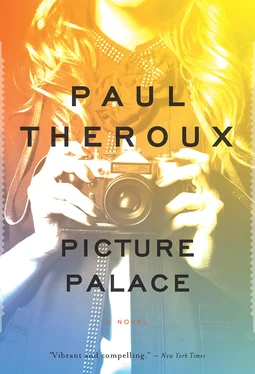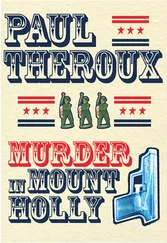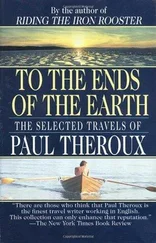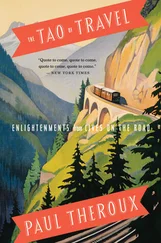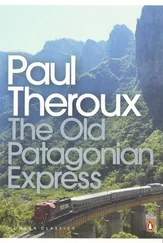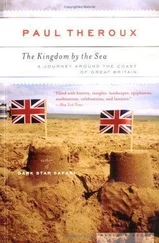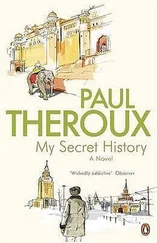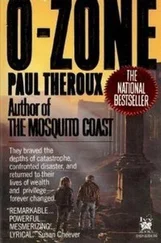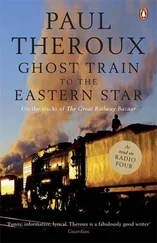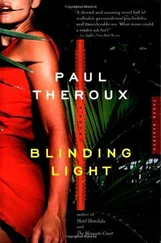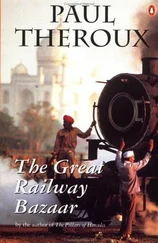“Don’t be silly,” I said. “Frank’s the one who took the pictures.”
“Yeah.”
The party had thinned out. The remaining people gravitated over to the crowd around Frank, where I was lost. Two of the photographers I had spotted earlier were snapping pictures, and Frank’s face was briefly incandescent as he said, “I just hope people pick up on it in the right way.”
He loved every minute of it and seemed so engrossed that he surprised me a moment later by saying, “Hey, has anyone seen Maude?”
“No,” I said, and I meant it. No one heard me — they were also saying no. I crept across the room to the retrospective.
I WASN’T HERE, either. The place was empty, a vestibule with a stack of catalogues, more posters, a passageway like a funhouse labyrinth, and beckoning sounds: Twenties music, surf, gulls, traffic, clangs; and the sharp smell of strong light on fresh paint. No people. I looked for myself among the pictures.
The first room was book-shaped, my early shots pasted on the walls as if into an album. They were family scenes, done long ago, the boat, the beach, the house — full of wonder which, because it was innocent, looked clumsy and appealing. Not here.
A trolley bell gonged in the next room; city noises, voices half smothered in traffic. New York, 1923 , said Frank’s sign, and there was Lawrence Retreating, Mott Street, The Battery, Broadway, Chinese Grocery, Wolfpits Furriers , and my Grand Central sequence.
The surf I had heard on entering the show was now so loud it seemed to be pounding on the adjoining wall. I walked in expecting to be dragged away by the undertow, but it was a mock-up of my Provincetown exhibition — Mrs. Conklin, Clamdiggers: Wellfleet, O’Neill at Peaked Hill , and the fifty or so negative prints I had called Boogie-Men: Teets, Doolum, Pigga, Frenise, and more.
The sea-sounds poured isolation upon me. I could not hear the party. I had entered my own world, but I felt ghostly in it — I did not exist there among Stieglitz, Boarders, Stoker, Alligator Wrestler, Thunder over Boca Grande . An entire art-deco room was given over to the Pig Dinner. There was Papa and Mr. Carney, Harvey and Hornette, Mrs. Fritts, Mr. Biker, “Digit” Taft, and Glory. They were slightly smoked and blurred, as they were in my memory, and yet they were less than I remembered. I was touched by their trapped faces, by the naked ones’ nakedness. And I knew what was coming.
A blind wall, nothing, then Firebug . I did not go close. I feared entering any of these pictures and being submerged to suffer them again. I strolled, keeping my distance, and saw Frost , the Hollywood pictures of Huxley and Mann and Alan Ladd crying, the creepy pieta of Ray and Cissy Chandler, the other actors in tears. Stiffs.
The Whose Room? shots Frank had retitled London Interiors , rather spoiling the point. But what a rogues’ gallery it was! The rooms and then the faces: Eliot, Ackerley, Waugh, Forster, and further on Patton, G. Stein, Cocteau, Maugham, Picasso. They were not looking at me — not surprising: the subject does not see the photographer, only the peepstones of her Third Eye.
I was not here, not here, nowhere, and yet I knew that I had entered the picture palace of my own memory. I regretted my absence, but I was astonished by how much there was here — all the forgotten pictures Frank had not troubled himself to show me: Apple-Seller, The Sneeze, Junk Shop Window, Phil Rizzuto, Mailman’s Shoes, Orthodox Jewish Boys , the impoverished glamor girls series, scores of blind people, and the picture that had been inspired by an old cartoon, Man Eating Peas with a Knife . Spendid stuff, but where was I? Not in the group photos— Graduation: Woonsocket High School blown up across one whole wall, John Hancock across another — and not in Dancing Partners, Deliverance, Busing, Refugees, Butcher’s Apron, Move Along, Baggers , or the twelve pictures of Vietnamese refugees hurrying toward the door. I looked for more and saw Exit.
But I didn’t want to leave. I headed back through the exhibit and it occurred to me how many were missing. Although to the casual viewer it was complete, an entire life, I knew there were gaps — years and years missing. Frank had left out my six erotic pictures, Eel in a Toilet , the ones of my family that I knew best (vivid in my mind because they were snapshots, set for infinity). Was he trying to save my reputation because he found them amateurish, or prettify his own because he thought they were vulgar?
And the murderous one of Orlando and Phoebe naked in the windmill — the only one in fifty years that truly mattered: suppressed! How like a masturbator to hide his imagery in shame.
“What retrospective?” I said aloud. To see this show, one would have thought, as I so often had, that my life had been rich and happy, full of travel and excitement, fifty years of achievement. No failures, no tears. But this was the lie of perfection imperfectly concealing that it was mostly failure. And it was hardly surprising that no one at the party had recognized me. I was not one of my pictures, or even the sum of them.
I wandered back to the Provincetown room. Frank had mounted a slide projector behind a wall, and as the sorrowing gulls cried and the waves sloshed the timbers of an invisible jetty (and was that a whiff of saltwater taffy in the air?), the pictures changed: Dunes, Clamdiggers, Cummings, Pigga, Sunday Bonnets, Hurricane Damage . Not mine — they were the world’s property and the experience of whoever cast a glance at them. But no life was this neat.
Footsteps in the vestibule. I listened hard. One pair of clodhoppers.
“Maude!”
I turned and tried to smile.
“So this is where you’ve been hiding. I’ve been looking all over—”
“Dry up,” I said.
Yet I wanted to reassure him, to hug him and say, Forget it — it’s all yours! You’re welcome to it! Then I saw his smugly patronizing face and cough-drop sucker’s mouth. I had the impression he wanted to kiss me.
I said, “I’d like to be alone.”
“You’ve been drinking again.”
To spite him, I burped, bringing the gas up from the depths of my gut. Then, pleased with this piece of theater, I wanted to go.
“Come on out and take a bow.”
“No. It’s time I went home.”
He looked relieved. He cleared his throat. “Say, what do you think of the show?”
“Very nice, but it ain’t mine. Anyway, there’s one missing.”
He blushed and touched at his face and left a chalk-white fingerprint of pressure on his cheek. His eyes were glazed with shame. He said, “Give it to me. I’ll make room for it.”
“Get a job, Frank!” I said, and couldn’t help laughing. I started to walk away — and my mind raced ahead of my feet: I was home, in my room, drinking alone in my nightie and reflecting that if the pictures were his so was the guilt; and I was at last free.
“Which one?” he asked, but he didn’t want to hear.
“You wouldn’t know,” I said. “Besides, I haven’t done it yet.”
I chose to leave by passing once again through the exhibition. And it struck me that the pictures told me more about Frank than about myself, for the mind was revealed by the way it distorted, or suppressed, or seized upon a particularly telling travesty. Literally that: a man in a dress spoke volumes, while a woman with a camera seemed to have few secrets. I was merely a spectator, stinking of chemicals. I had to be seen to be believed.
PAUL THEROUX is the author of many highly acclaimed books. His novels include The Lower River and The Mosquito Coast , and his renowned travel books include Ghost Train to the Eastern Star and Dark Star Safari . He lives in Hawaii and on Cape Cod.
